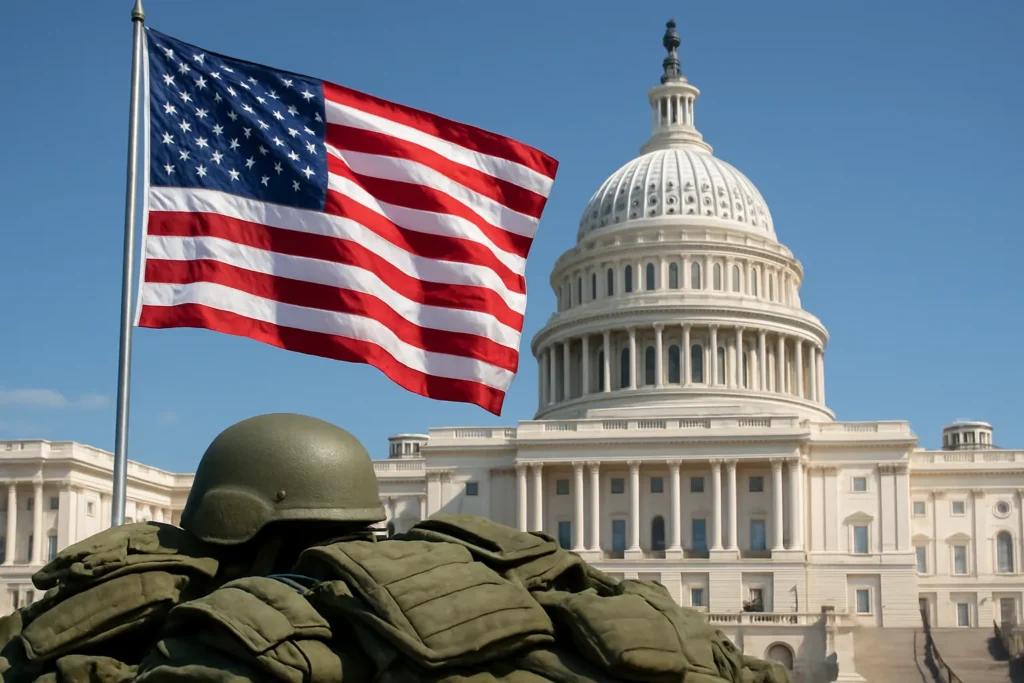The Stakes in Ukraine: More Than Dollars and Tanks
Imagine this: a single Senate committee vote reverberates across Eastern Europe, the White House, and the farthest corners of America’s defense industry. Last week, the U.S. Senate Armed Services Committee did just that, approving $500 million in fresh military aid for Ukraine as part of the 2026 National Defense Authorization Act (NDAA). For some, it’s a routine annual exercise. For others—especially those in Kyiv, Warsaw, or even Beijing—it signals whether the world’s most powerful democracy stands with embattled nations or teeters on the edge of strategic fatigue.
Why does this matter beyond the currency signs and headlines? Ukraine’s survival isn’t solely a European problem or a partisan chess piece. It’s a test of American resolve against authoritarian aggression. According to Brookings Institution senior fellow Fiona Hill, “Russia’s war is not just about Ukraine. It’s about a larger contest for the rules-based order.” The $500 million will be funneled through the Ukraine Security Assistance Initiative (USAI), a program specifically designed to fund new weapons production with U.S. contractors—thus not depleting American stockpiles already thinned by prior drawdowns. That distinction is key for military leaders now voicing concerns about readiness.
Yet, the current pause in direct U.S. weapons to Ukraine—initiated earlier this year by the Pentagon to shore up American capabilities—has exposed just how thin the line is. The memories of a shocked global community watching Russia’s 2022 invasion unfold are still fresh. As Sen. Jerry Moran (R-Kan.) argued, when democracies hesitate, autocracies take note. If Russia redraws borders by force, the world’s other strongmen—from the halls of Beijing to the corridors of Pyongyang—are sure to notice.
The NDAA: Balancing National Priorities Amid Uncertainty
Beyond that, the NDAA isn’t just about Ukraine. It’s a mammoth bill authorizing nearly $925 billion in national defense spending, with $878.7 billion allocated for the Pentagon and $35.2 billion for the Department of Energy. The NDAA is Congress’s annual chance to shape America’s global footprint, and this year’s version is loaded with choices and trade-offs.
Military personnel and their families are poised to see a 3.8% pay raise—vital in an era where recruiting and retention are under strain. The bill also mandates an education campaign around military compensation, spotlighting the real-world challenges service members face. Meanwhile, the NDAA bars any reduction in U.S. troop presence in Europe without a formal assurance to Congress that such a move aligns with both national and NATO interests—a clear rebuke to isolationist impulses gaining traction in some conservative circles.
This isn’t just about defending distant allies. It’s about reinforcing U.S. values and commitments at home and abroad. The move to sustain robust support for Ukraine, maintain a strong force posture in Europe, and invest in next-generation technologies like artificial intelligence and hypersonic weapons speaks to a recognition that democracy’s enemies are watching for gaps in American armor—literal or symbolic.
“Weakness in the face of aggression only emboldens authoritarians—and history has taught us that the cost of inaction far outweighs the price of preparedness.”
That’s not just a talking point; it’s a lesson learned time and again, from the ashes of appeasement in the 1930s to the hard-won alliances of the postwar order. Yet, if you’ve followed the House’s counter-offer—a slimmer $300 million for Ukraine—you know nothing is guaranteed.
Domestic Ripples: Jobs, Borders, and the Battle for Political Will
A closer look reveals how global security policy ripples through domestic life. Sen. Moran and others have underscored that aid for Ukraine doesn’t simply vanish overseas—it creates jobs in American heartlands, sustaining factories from St. Louis to Scranton that produce everything from artillery shells to sophisticated drones. As defense analysts at RAND point out, investments via the USAI keep U.S. manufacturers humming and guard against the loss of critical skills and supply chains.
But support for Ukraine has become a political lightning rod, especially with election-year tensions rising. President Trump, whose administration has so far held back new aid to Kyiv, has repeatedly signaled skepticism about “blank-check” commitments abroad. The NDAA’s fate—along with that of its $500 million Ukraine provision—now hinges on negotiations in both chambers and the signature of a president whose own party is hardly unified on foreign policy.
In the same bill, lawmakers inserted provisions to boost cooperation on the U.S.-Mexico border, highlighting domestic security anxieties—another wedge issue in American politics. The NDAA directs the Pentagon to enhance communication with the Mexican military and launch a joint counter-transnational criminal organization training program. It’s a reminder that Congress must walk and chew gum: securing American interests abroad and protecting communities at home.
So, is this $500 million lifeline to Ukraine transformational or just a drop in an ocean of uncertainty? If you ask Ukrainian officials, the answer is clear: every day without U.S. support yields ground to Russia. U.S. voters, though, deserve honesty about what is at stake. These aren’t abstract numbers—they are a test of whether America will keep faith with the ideals it professes at home and champions abroad.
According to a December 2023 Pew Research survey, Americans remain broadly supportive of aid to Ukraine, though partisan divides are sharper than ever. The underlying truth endures: “If we turn our backs now, we risk inviting not just more war in Europe but a future where American leadership is just another negotiable commodity.”

